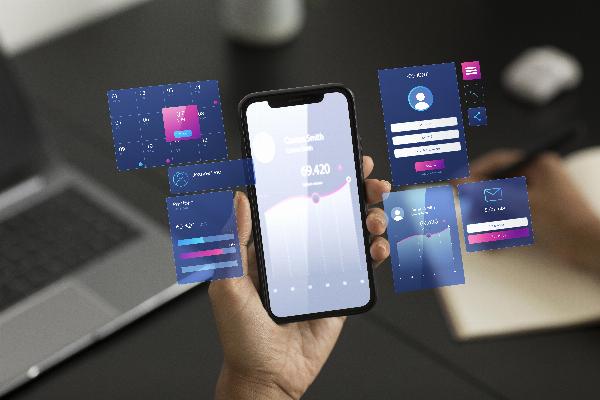What is Spatial Design? UX of Virtual, Augmented and Mixed Reality

Strong 8k brings an ultra-HD IPTV experience to your living room and your pocket.
Regardless of the different disciplines that participate in product design, user experience and user interface have seen their presence grow in the generality of services in recent decades. The growing trend in the study and application of these disciplines marks a before and after in the evangelization of UI UX design services , which is why it is increasingly becoming the decision of many professionals from other fields when choosing a job, such as designers. graphics or industrial web designers…
However, this situation makes us wonder: What will be the application of user experience in the future? How will the study of new practices for interfaces and experience environments materialize?
We should not look so far from the present to get an idea. The answer lies in Spatial Design and the break with the two-dimensionality of traditional devices .
Spatial Design, Spatial UI or spatial design applied to user experience groups together the different ways and possibilities in which internal information is organized and presented in a three-dimensional environment , going from the conceptualization of interactions to the design of the user interfaces themselves. users who use virtual reality (VR), augmented reality (AR) technologies or even what is known as mixed reality: a combination of the use of the two previous types of experience. These 3 technologies are increasingly present in our day-to-day work, but it is important to correctly distinguish these 3 areas and how Spatial Design affects them in their development.
The 3 fields of application of Spatial Design
Virtual reality (VR)
Virtual reality creates a completely digital and immersive environment . Users explore and interact in digital environments through navigation devices such as virtual reality glasses. The essential differentiation is the high immersion potential, where users immerse themselves in non-tangible experiences.
We can find typical examples in virtual reality games, such as driving simulators, or in immersive museum experiences, trends among educational practices.
See also: Heuristics applied to Virtual Reality
Augmented reality (AR)
Augmented reality combines the real world with superimposed digital elements through the use of devices that view the environment (such as a smartphone, AR glasses or tablet) and to which virtual elements are added to that view in real time.
We can find these technologies in examples of reality such as the popular filters of different social networks, which apply visual augmentations and filters to the image captured through mobile cameras, or in the very famous case of Pokemon GO , where Pokémon appeared in the physical vicinity of the user, through the camera of their phones.
Mixed reality (MR)
Mixed reality combines elements of augmented and virtual reality . Users interact with physical objects and environments that coexist and can interact with virtual objects and environments in an integrated manner, the former being conditioned to real-world conditions. We can take as examples the hybrid experiences that offer products.
These 3 fields of work are similar but with different considerations, the work of Spatial Design is applied in different ways as well.
Spatial Design is relevant in augmented reality so that digital elements are integrated and superimposed correctly in the different volumes of physical reality , so there must be a calculation and evaluation of the distances of the objects. The arrangement, scale and interactivity of these elements require exact spatial considerations with the real environment.
On the other hand, virtual reality is affected by Spatial Design in the scalability of digital environments . The organization of space, navigation and the arrangement of elements in the virtual environment are key aspects of spatial design, this being different for each specific case.
In the case of mixed reality , the designer encounters unique challenges in requiring the integration of digital objects into the real environment . Here, Spatial Design is applied to ensure that the combination of virtual and real elements is coherent and effective , and this is achieved through 5 principles that must be taken into account from the point of view of the User experience.
Principles of Spatial Design
Familiarity
As Apple points out in its fundamental principles, interfaces and workspaces in spatial design must have a balance between novelty and familiarity : the formats in which we manage or consume content must be familiar to the classic user experiences, Therefore, we will also apply the same measures and guides that are used in traditional experiences.
This would apply to content windows, where we will contain the content initially, with the possibility of adding content by external panels.
Scalability
As we find in current interfaces, scalability is an important point to take into account in spatial design, taking into account that our experiences can be resized according to the functions and needs of the user.
This is achieved by applying specific spacing and grid guides to today's digital experiences. If we apply these same guidelines in consistent units of measurement, such as points (pts), we guarantee content scalability.
Immersion
The work of spatial experience designers must focus an important part on immersion. We must carefully shift the user's attention to the experience, without completely isolating it from external reality. There are multiple decisions and techniques to achieve the purpose through opacity, localization and delegation of actions to the user in order to maintain their attention to what surrounds them.
An interesting application is Glass Morphism , an effect applied to a container to make it look like glass, blurring what we have behind it a little. This allows the user not to lose the information that occurs with the space through the content windows seen through the VR glasses.
Authenticity
Familiarity is important to maintain understanding and provide the user with easy navigation. However, special considerations of breaking two-dimensionality can provide unique experiences that generate value for our user, so the search for new enriched experiences between the digital and real environments will add value to our product.
User-centric
Perhaps the most important principle to keep in mind is the user themselves. Applying our knowledge as UI UX design services is essential when carrying out a correct application of Spatial Design: considerations such as the user's movement, their field of vision, or their position when designing immersive experiences will make an essential difference and They will guarantee consistency, accessibility, control and communication between reality and experience for the user.
Note: IndiBlogHub features both user-submitted and editorial content. We do not verify third-party contributions. Read our Disclaimer and Privacy Policyfor details.


